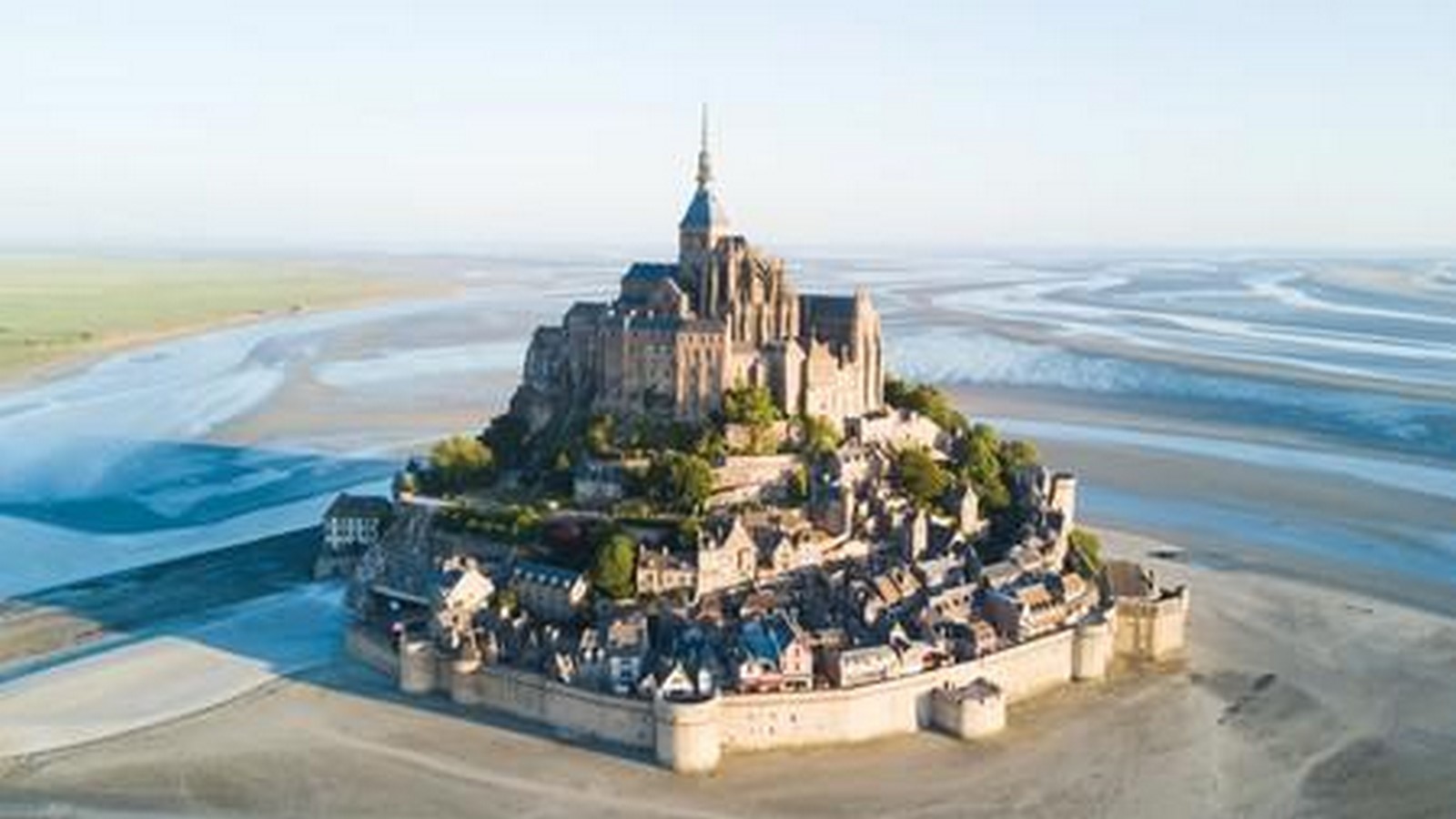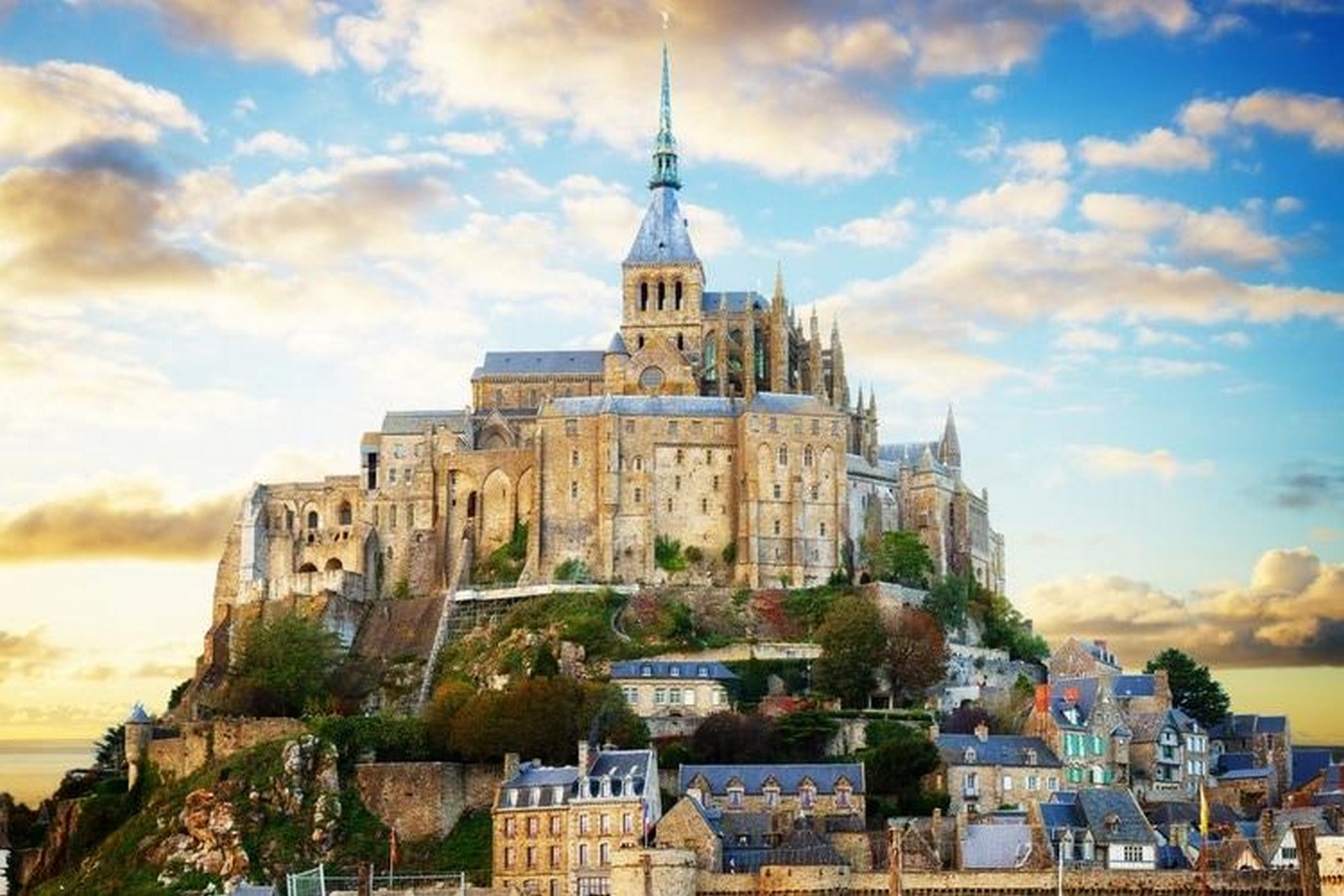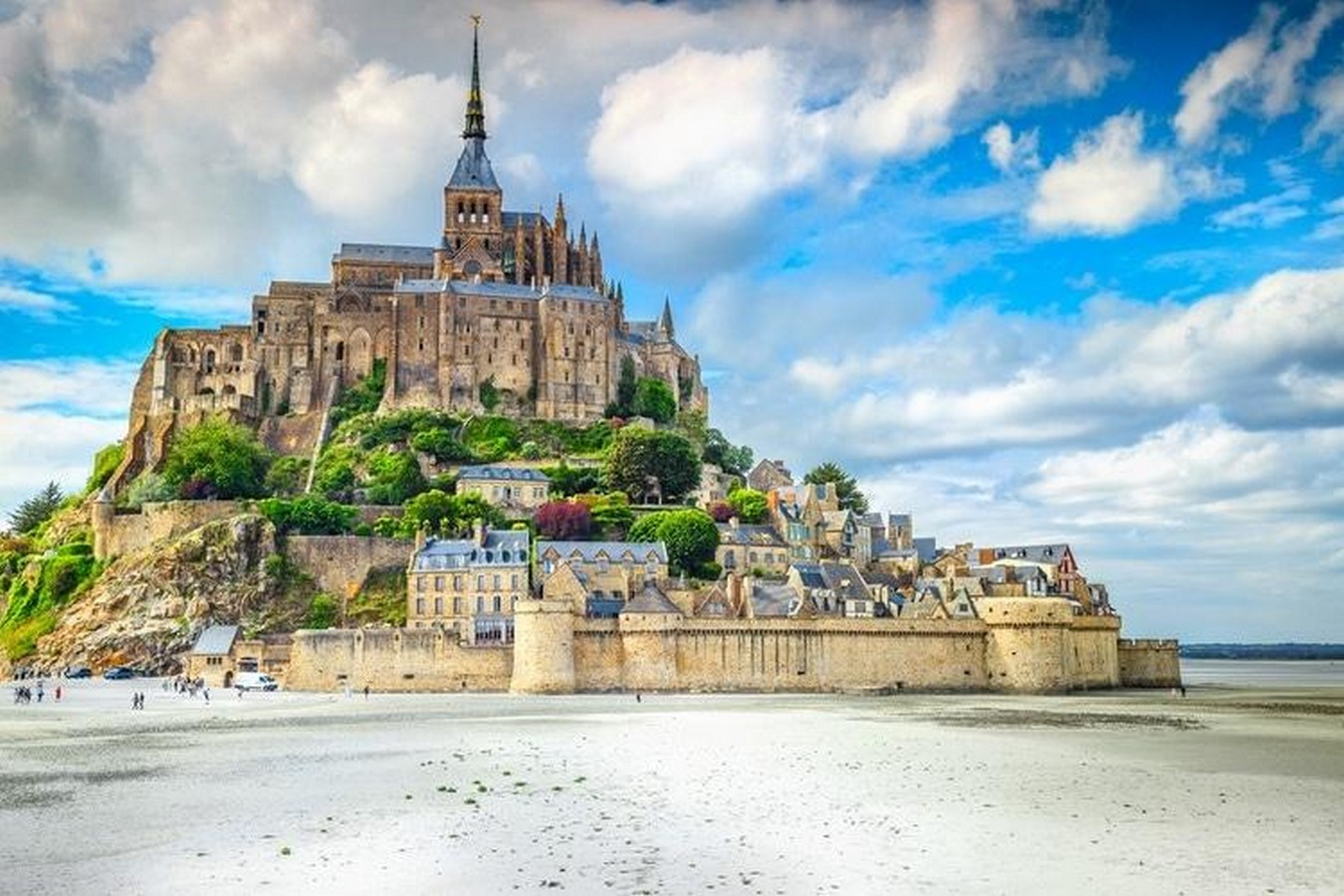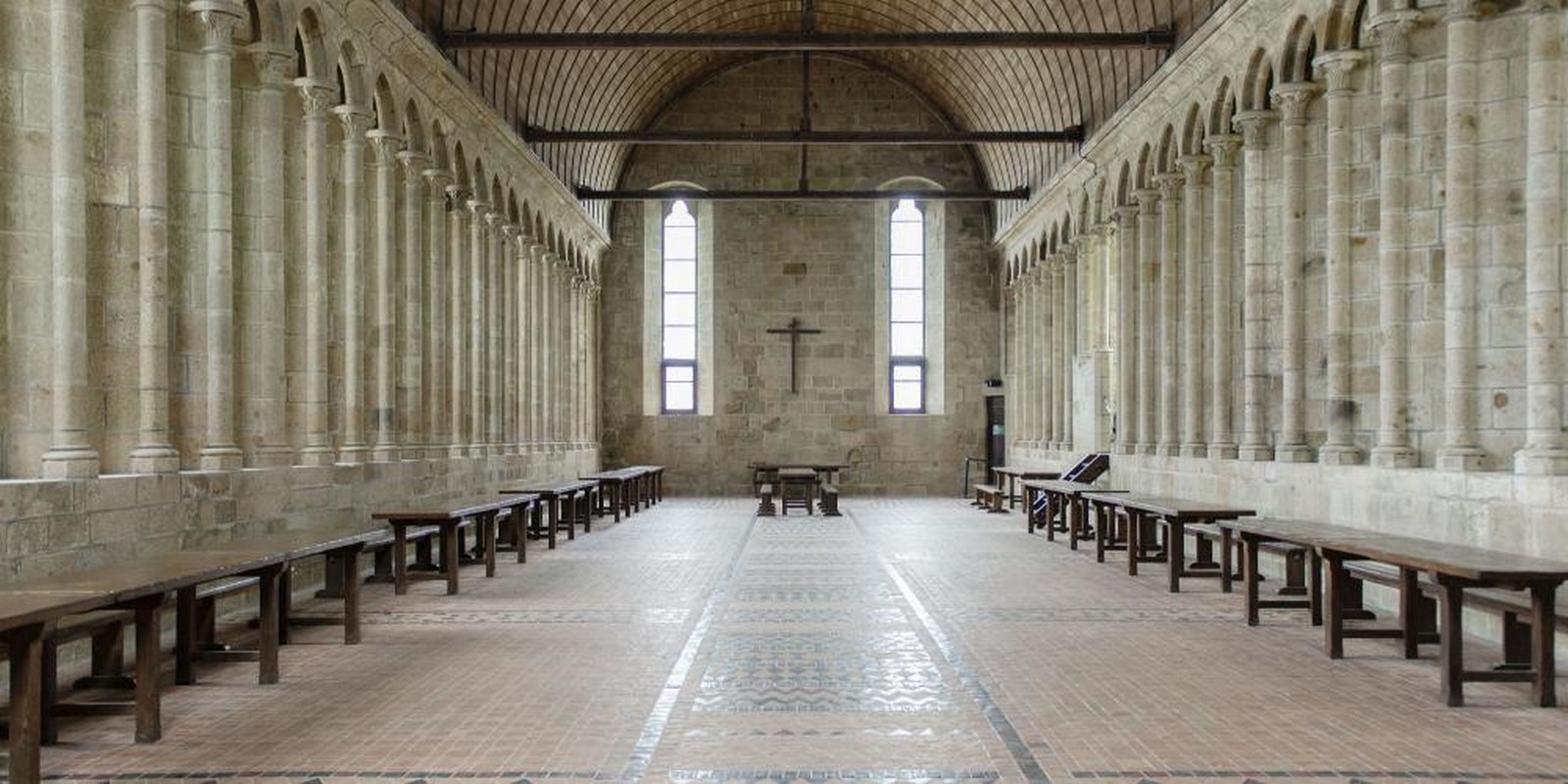Side Plan Drawing Mont Saint Michel

Synopsis of a Heritage
A UNESCO World Heritage site, Mont Saint Michel is an island district in Normandy in France . The island is nigh a kilometre away from the country'southward north-western coast, at the mouth of the Couesnon River virtually Avranches. Its area is 100 hectares (247 acres), and its population is 32 (2017). Information technology is one of Europe's well-nigh memorable sights gear up in the mesmerizing bay where Brittany and Normandy meet, drawing the center from afar.

Historically, the island has served as a fortification since ancient times and is habitation to the monastery information technology takes its name from. According to the town's structural composition, the feudal society that built it consisted of: On superlative, God, the Abbey and monastery; beneath, the great halls; and then stores and housing; exterior the walls were fishermen and farmers' houses.
The island'southward unique location – just 600 meters from the mainland – made it accessible at low tide to pilgrims to the Abbey, but defensible during an incoming tide, which trapped, driven away or drowned whatever would-be attackers. Mont remained unconquered during the Hundred Years' War despite a full-calibration English assail in 1433. Considering of its natural defence, Mont was converted into prison under Louis Eleven. During the Aboriginal Régime, the Abbey began to be used more frequently as a jail.

The Mont-Saint-Michel constitutes a remarkable aesthetic achievement in his unique combination of natural dazzler and architecture. It is a unique ensemble, both considering of the coexistence of the Abbey and its fortified village within the bounds of a small island and the originality of the placement of the buildings, which complement the structure's unforgettable silhouette.

Formation

Mont now occupies a tidal isle, but it was an island on dry out land during prehistoric times. As sea levels rose, erosion reshaped the coastline, and numerous outcrops of granite appeared in the bay, which had resisted mainly the wearable and tear of the bounding main. Mont-Saint-Michel consists of leucogranite, formed by molten magma intrusion during the Cambrian menstruation almost 525 million years ago. Early studies of Mont Saint-Michel by French geologists referred to the leucogranite as "granulite," but the granitic sense of the word is now obsolete. Mont has a circumference of approximately 960 meters (3,150 feet), and its highest betoken is 92 meters (302 anxiety) above sea level.

Shift with Architectural Code of Carry
In the Middle Ages, Mont Saint-Michel became ane of the most important pilgrimage sites. In that location are several main reasons to visit the Mount and village, outset with the compages of the stone and timber-framed houses, many of which are classified as historic landmarks. A significant part of the amuse comes from the original names of some of the places. In the South and East sides of the Mountain, houses are stacked in tiers surrounded past steep, rocky embankments.
Built in 966, this Benedictine abbey was built on top of a sanctuary dedicated to Archangel Michel since 708 and has some Romanesque remnants. The oldest part of the Abbey is Notre-Matriarch-sous-Terre, a modest pre-Romanesque church with a double nave built-in granite masonry and flat brick. Romanesque architecture can still exist seen in the nave of the abbey church, whose crossing is supported by the rock height, and in a grouping of contextual buildings (the chaplaincy or gallery of Aquilon, the covered gallery of the monks whose vault was congenital after 1103, one of the earliest examples of ribbed vaulting ).
However, the masters of the Gothic period took advantage of the restricted expanse to create the loftier walls, the loftier masses, the forthcoming volumes, the pinnacles, and the sharp silhouettes of the rock. Due to the elegance of the design, the new contextual buildings born 1204 bear the name "Merveille" (Marvel).

Integration of the Surroundings
Building on such treacherous footing-on a small rock in a bay with some of Europe'due south strongest currents and tides-must have required a lot of faith. The pilgrims' journeying to reach this holy precinct was a test of faith. Despite the turbulent history of Mont and the devastation of the earlier role of the church, the ensemble of the site and the Abbey remains intact. Through restorations in the 19th century, the buildings regained their dignity and emblematic aspect, specially with the structure of the spire in 1897. Historically, the village has retained its ancient structures.

Being Authentic
For centuries, the Mont and the surrounding landscape of the bay have been inseparable. Buildings of the Abbey and its surrounding village, carefully maintained, restored or renewed according to their substance, history or layout, are a striking example of authentic architecture. Since being abolished in 1789 and used equally a prison house until 1863, the Abbey stands today every bit a monument to the Christian past, where the presence of monastics is maintained by a modest community. The site'due south history, shared by iii meg visitors annually, recalls its essential role.
Considering the topographic characteristics of Mont and its status as a famous landmark, its visual characteristics are incredibly vulnerable to modifications to the mural that may alter the views to and from the belongings. Furthermore, the loftier tourist frequency threatens to destroy the atmosphere of the identify. The concept is incorporated into planning tools such as the patterns of territorial coherence. Thus it receives regular restoration work from the centre. Because the geological nature of the site, consolidation work on the rocks is carried out periodically.
Thus, the erstwhile roots of the monastery, the eclectic compages, or the religious significance of this medieval masterpiece take undoubtedly enchanted visitors for centuries and volition keep to do and so.
References:
- Middle des monuments nationaux. (n.d.). History of the monument . [Online] Available at: http://www.abbaye-mont-saint-michel.fr/en/Explore/50-histoire-de-l-abbaye-du-Mont-Saint-Michel# .
- Les portes du Mont-Saint-Michel. (n.d.). Find and visit Mont Saint-Michel . [Online] Available at: https://www.le-mont-saint-michel.com/en/observe/the-mount/
- Wikipedia. (2021). Mont-Saint-Michel . [Online] Available at: https://en.wikipedia.org/wiki/Mont-Saint-Michel .
- The Editors of Encyclopaedia Britannica (2017). Mont-Saint-Michel | History, Geography, & Points of Interest. In: Encyclopædia Britannica . [Online] Bachelor at: https://www.britannica.com/place/Mont-Saint-Michel .
- Ago, J.-A. #photography • 4 Y. (2018). Mont St Michel, France . [Online] Steemit. Available at: https://steemit.com/photography/@jeffery-awesome/mont-st-michel-france




Source: https://www.re-thinkingthefuture.com/rtf-architectural-reviews/a6323-an-architectural-review-of-mont-saint-michel-commune-in-france/
0 Response to "Side Plan Drawing Mont Saint Michel"
Postar um comentário